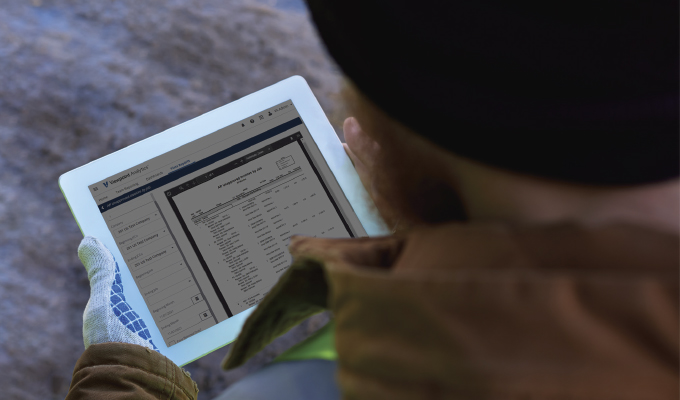In an industry that increasingly operates on tight schedules and margins, sluggish accounting workflows can hurt your firm’s profitability. Relying on paper and manual processes can interfere with cash flow, strain relationships with subcontractors and suppliers, and delay project timelines—just to name a few possible downsides. As the costs of debt and equity rise, contractors looking for ways to streamline and accelerate invoicing and accounts payable (AP) processes are turning to cloud-based mobile applications.
Connected mobile applications alleviate the delays, errors, and costs associated with paper-based payments and invoicing, allowing workers in the field to access and capture data in real time. Removing paper from the equation reduces the risk of miscommunication, mistakes, and lost documentation.
Integrated mobile applications also eliminate the need to re-enter information from paper or spreadsheets into construction management software in the office. When a problem or conflicting information arises, employees don’t have to follow a paper trail or chase people down for answers.
With data stored securely in the cloud, accounting teams can access up-to-date project information and use it to generate client invoices quickly. The seamless flow of information between the office and the field provides accounting teams with the data they need to keep the bills paid and invoiced without delays.
MOBILE DATA SHARING
Connected mobile applications are especially beneficial for service contractors, giving technicians in the field real-time access to the information they need to self-manage their work. Technicians no longer have to perform a series of manual processes to input data from the field into systems when they get back to the office. And accounting teams don’t have to delay invoicing because they’re waiting on technicians to enter information.
Mobile applications use the same connected data as the back office to generate purchase order requests. Receipt information and tracking can be captured in the field, with a three-way match in place to ensure the accuracy of purchase orders. Electronic signature capture allows customers to sign, approve, and receive emailed work orders from the technician’s mobile device. With a real-time connection to the office, completed work orders are routed to accounting for generating invoices right away.
Texas-based civil contractor Great Basin Industrial (GBI) replaced manual processes and spreadsheets with a connected mobile app to accelerate time and materials (T&M) billing, improve cash flow and reduce costs. Before making the change, GBI captured T&M in spreadsheets and transmitted them to the office, where the information was entered into its accounting ERP.
A heavily manual process, consolidating T&M data into field tickets for owner submission took around 30 days. Complexity, the sheer volume of tickets and spreadsheet-based tracking left many T&M dollars unbilled. Work-to-billed-to-paid time stretched 50 days or more, which impacted cash flow. Billing consumed an outsized proportion of the accounting team’s time and resources, and project managers lacked daily cost data to ensure that projects stayed on budget.
With the ability to capture labor, equipment time, materials and production in the field, producing a field ticket went from 30 days to just one day. The company’s cash flow improved, and its work-to-billed-to-paid time decreased by 50%. GBI also reduced the number of people focused solely on billing by 50%, freeing up accounting employees to focus on other crucial tasks.

DECISIONS ON THE GO
Contractors are also finding that cloud-based mobile applications extend the power of data analytics tools beyond the office. Whether on a jobsite, in the office, in transit, or even working from home, mobile analytics tools are expanding access to real-time data and insights, helping contractors better understand their work so they can adjust course and make important decisions on the fly.
However, enjoying the benefits of mobile construction data analytics requires a connected, cloud-based software suite. With a shared set of standardized construction data, information can flow seamlessly, allowing users to pull virtually any data they want in minutes. Mobile data analytics can be applied across the organization, allowing virtually any construction professional to compare and segment data, whether in the back office, in the field.
CLOSING THOUGHT
It impacts nearly every aspect of our daily lives, so it’s no surprise mobile has begun to play a significant role in the construction industry. The ability to capture and access data on the go and quickly analyze, compare and digest it in the office or the field can be transformative. While many contractors recognize the important role mobile applications can play, looking at the different ways they bring value—from accounts payable and cash flow to field operations, communication and analytics—may highlight new opportunities to do even more.
About the Author:
Michael Smith is the senior director of growth and innovation at Trimble Viewpoint, where he leads the development of next-gen solutions that enable contractors to run smarter and more profitable office and field operations by connecting workflows and gaining insights through shared real-time data and industry-leading analytics.
Modern Contractor Solutions, September 2023
Did you enjoy this article?
Subscribe to the FREE Digital Edition of Modern Contractor Solutions magazine.



